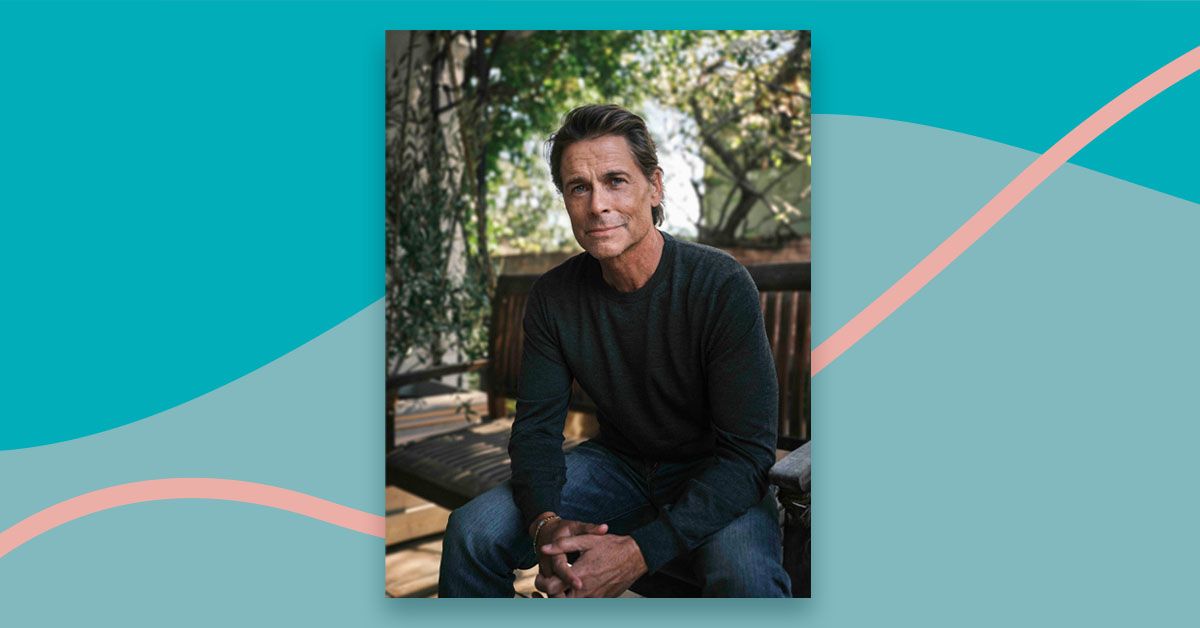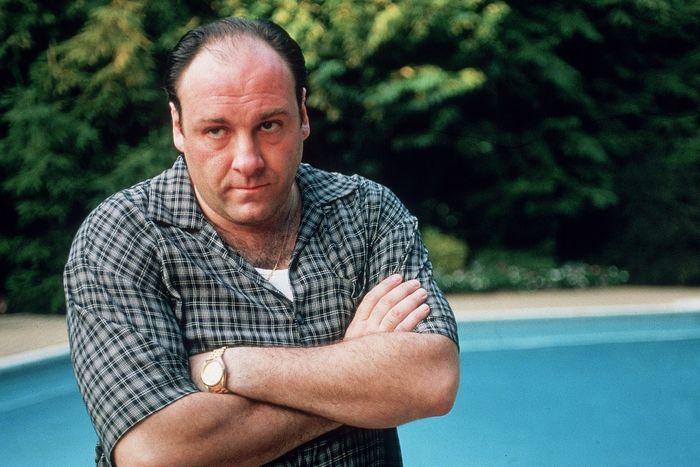Sopranos creator David Chase had one question when James Gandolfini’s manager, Nancy Sanders, suggested him for the role of Tony Soprano: “Is he threatening enough?”
Photo: Ron Galella/Ron Galella Collection via Getty
James Gandolfini was unknown to most TV viewers when he got the role of Tony Soprano. But if you were a connoisseur of character actors in the mid-’90s, he was already on your radar. Gandolfini had made a powerful impression in multiple big-screen supporting roles, including the intimidating Lt. Bobby Dougherty in submarine thriller Crimson Tide; a detective briefly possessed by a demon in Fallen; Geena Davis’s sweet boyfriend in Angie; a burly henchman named Bear who gets beaten up by John Travolta in Get Shorty; and, most spectacularly, the mob goon who fights Patricia Arquette to the death — and loses — in True Romance. When Gandolfini showed up in the waiting room of Dr. Melfi’s office in the pilot episode of The Sopranos, staring silently up at a statue of a naked woman, it was clear he’d found the role that would engage all his talents, plus more he hadn’t yet tapped into.
This excerpt from Gandolfini: Jim, Tony, and the Life of a Legend, the new biography of the actor by critic, film historian, and Vulture contributor Jason Bailey, charts the winding path that brought the actor into Sopranos creator David Chase’s sphere. The book necessarily explores its subject from the outside in, as Gandolfini was a private man who only gave two full-length solo interviews during his career (one of them was to me in my capacity as a TV critic for the Star-Ledger). It’s fascinating to see him through the eyes of people who would later become his colleagues and friends. Even before he became famous, he could be an unpredictable, impulsive, and at times inscrutable presence.
While the pilot script was knocking around from one network to another, David Chase had been up for a job on a CBS series for Marg Helgenberger centered on the Witness Protection Program. He used the Sopranos pilot script as a writing sample, which was how it got in front of James Gandolfini’s managers, Mark Armstrong and Nancy Sanders — Helgenberger was also their client. CBS passed on the Helgenberger pilot, but when word got around about the HBO deal for The Sopranos, Sanders saw an opening for Jim. “I read it again,” she recalls, “and I went, Oh my God, I think I have Tony Soprano.”
She called Chase at home and told him as much. He was enjoying a Sunday-night dinner and bottle of wine with his wife. “He sounds familiar,” Chase said. “I’m totally into having this conversation with you, but I may not remember it. Call me tomorrow morning and send me the VHS.” The following morning, a messenger delivered Jim’s reel to Chase; he called Sanders back at 11 a.m. “All right, here’s the deal,” he told her. “I think he’s brilliant. I have one concern, and that is, Is he threatening enough?”
“David, if your only concern is is he threatening enough … ,” she said, laughing. “If you said to me, ‘He’s a little chubby,’ or ‘He’s losing his hair,’ I could understand. But he’s threatening enough. This is your guy.”
“In the movie version of The Sopranos, I thought about Robert De Niro,” Chase said. “There was never anyone after that, seriously, who I thought could be Tony Soprano.” He’d hired casting directors Georgianne Walken and Sheila Jaffe, based on their work on the Steve Buscemi film Trees Lounge. “We didn’t know anything,” Jaffe said. “Georgianne and I had been doing independent movies; we’d never done television.” In 1996, they’d helped writer-director Melissa Painter cast a project she was workshopping at the Sundance Labs (it became her 1999 feature, Wildflowers) about a father and daughter. Painter suggested Gandolfini, whom she knew personally.
“We had only seen Jim Gandolfini play heavies,” Jaffe said, “and this father was this hippie who was very different, but I thought he was a good actor. I’d seen him in A Streetcar Named Desire with Aida Turturro. I always thought he was really good, interesting, but I had never seen him do this kind of thing. But it was a lab and it was like, ‘Why not?’ He did it, and it was great. So I knew this other side of him that I don’t think the general public had seen yet, which made me know he was capable of so much, because he was a really great guy.”
With Sanders pushing for him, and Walken and Jaffe in his corner, Gandolfini was thrilled with Chase’s Sopranos script. “I think my exact words were, ‘I could kick this guy right in the ass, but I’ll never get cast,’” he recalled. “‘They’ll hire some fucking pretty boy.’ I thought they’d hire, you know, one of these Irish-looking guys who are all over TV now.” What’s more, Gandolfini wasn’t the only one up for Tony (although, Walken noted, “everybody had to be Italian — that list was long, but it wasn’t that long”), and everyone had to audition, first for Chase and then for the suits at HBO. “We said, ‘No, you should know who he is,’” Mark Armstrong says. “Who is HBO to ask him to read when ABC, which was the big deal then, is offering him the lead of a show? So we said, ‘No, but we will have him meet David,’” and they arranged a breakfast.
“At the time, I was younger,” Gandolfini recalled, “and I stayed out late a lot, and I was like, Oh, for fuck’s sake. This guy wants to eat breakfast? This guy’s going to be a pain in the ass. So we met and we spent most of the time laughing about our mothers and our families.”
Next, Gandolfini met with the powers that be at HBO, “and then he offered to read,” Armstrong says with a laugh. “After all of us teeing it up and telling him he didn’t have to.” As Jim put it, “I was born to play Tony … I wanted it so much I agreed to audition for it.”
Walken and Jaffe rented an audition room on 72nd Street, a table and a couple of chairs, and set up a camera. Jim came in, chatted with Chase a bit, and started to read. “He was very good,” Chase said. But Jim had barely made a dent in it when he stopped reading and started apologizing. “I’m not doing this right,” he insisted. “I didn’t prepare for this right. I’m not doing it right. And I don’t want to do it anymore. I want to come back and do it for you again.”
He offered to come back the following Friday, Chase recalled, “and then Friday came along and he couldn’t come in. I swear this is what we were told: His mother had died.” It was purely a delaying tactic; Santa Gandolfini had passed months earlier.
By the time Jim finally felt ready to return, Chase was back in Los Angeles. But Walken and Jaffe were pushing hard for him — “He was really our favorite idea from the beginning,” the latter confessed — so they flew him out to Los Angeles to put him on tape. “David ran the camera, and I read,” Jaffe said. “And it was VHS tapes. That’s how long ago it was. And David and I ran back to his house, watched it, and we both got really excited.”
Nancy Sanders remembers sitting with Jim and his agent, David Brownstein, in the Century Plaza Hotel restaurant near HBO’s headquarters. “I came to you to do fucking movies,” he said. ‘“And now I’m doing an HBO series?”
Photo: Anthony Neste/Getty Images
“When he finally settled down and really did a reading, it was just obvious,” Chase said. “There was just not any question about it. He was the guy.” But Chase had to be certain. “It was audition after audition — a lot of people went up for that role,” he said. “As a matter of fact, they don’t like you to bring in one person — they want to have some input. So three people were brought to HBO for the role of Tony, and Jim was one of them.”
“There were three people testing for Tony,” according to Michael Imperioli, who was also at the network test, for another role. “Jim Gandolfini, who I didn’t know; Mike Rispoli, who I was good friends with, who went on to play Giacomo Michael ‘Jackie’ Aprile Sr.; and one guy who looked familiar, but I couldn’t figure out who he was. The casting director pulled me aside and said, ‘That’s Little Steven Van Zandt wearing a wig.’”
There was not an immediate consensus in the room. To Susie Fitzgerald, who was there on behalf of management-production company Brillstein-Grey, “the minute he walked in the room, I was like, Oh, that’s totally him.” But Chase “took some convincing,” according to Fitzgerald. “He loved Stevie Van Zandt.” Fitzgerald pushed hard for Gandolfini; she recalled Chase worrying, “He’s a pain in the ass on set.”
“I don’t care about that,” she replied. “Is it him?”
According to Chris Albrecht, president of HBO Original Programming, “Rispoli was great. He was funnier than Jimmy, just because of the normal rhythms that he had. And we talked about it, and David said, ‘It’s a very different show if you put Rispoli in it or Jimmy in it, but the show I envisioned is the show that’s got Jimmy in it. It’s a much darker show with Jimmy in it.’ I think we sat with that for a moment. ‘Dark’ is not really a word you ever want to go for in television, but the other one was ‘more real.’ So we cast Jimmy.”
No one was more surprised than the actor himself. “This was an incredible leap of faith,” he admitted. “I mean, it wasn’t four pretty women in Manhattan [as in Sex and the City]. This was a bunch of fat guys from Jersey.” Privately, he wasn’t so sure about the show or the role. Nancy Sanders remembers sitting with Jim and his agent, David Brownstein, in the Century Plaza Hotel restaurant near HBO’s headquarters, pressing him to sign the contract and dealing with an 11th-hour bout of second-guessing.
“Why am I doing this?” he asked her. “I came to you to do fucking movies. And now I’m doing an HBO series? I don’t even know what the network is!”
“Jim, listen to me,” she replied. “This is the best piece of writing I’ve ever read, whether it be TV, film, or theater. I promise you: This is worth doing. It’s not going to change the world, but it’s going to change TV.”
“Fine,” he sighed. “Fuck it.” He signed the papers. When he broke the news to Italian Movie director Roberto Monticello, Gandolfini despaired, “Oh my God, Roberto, I’m gonna be unemployed in less than a year. Who the hell is going to see a television show about mafiosos in Jersey?”
From Gandolfini: Jim, Tony, and the Life of a Legend (Abrams Press) by Jason Bailey, on sale April 29, 2025. © 2025 Jason Bailey.











